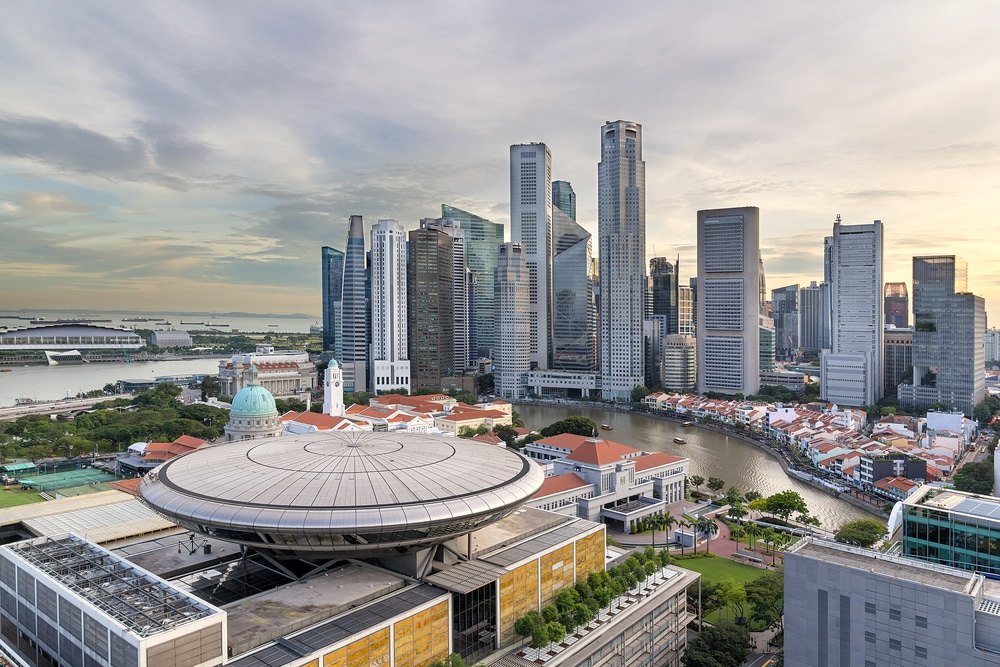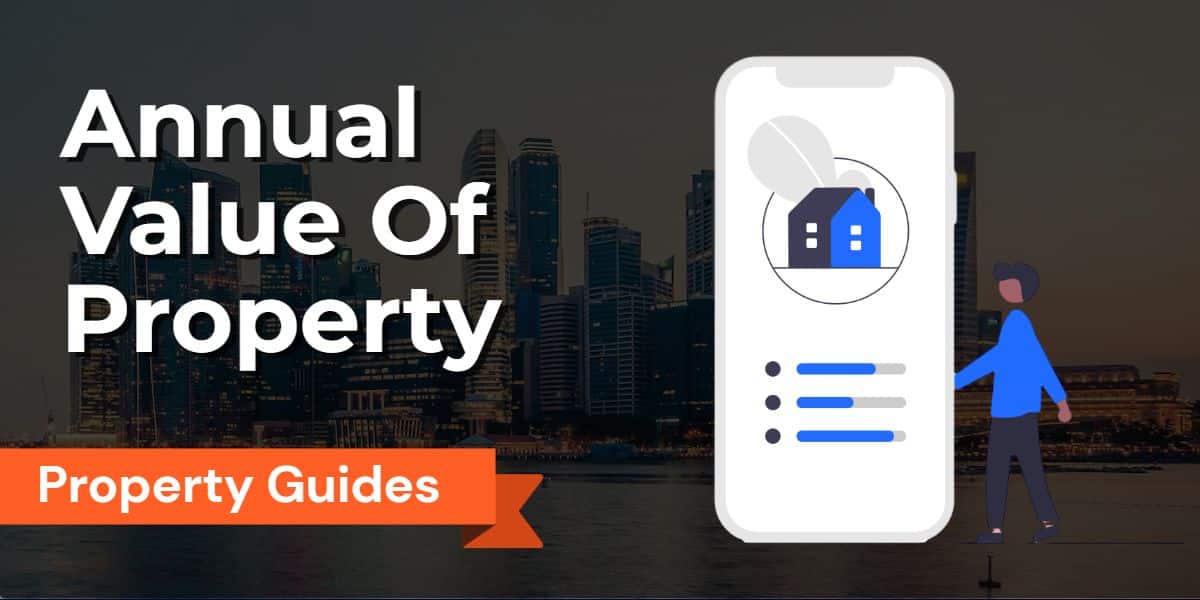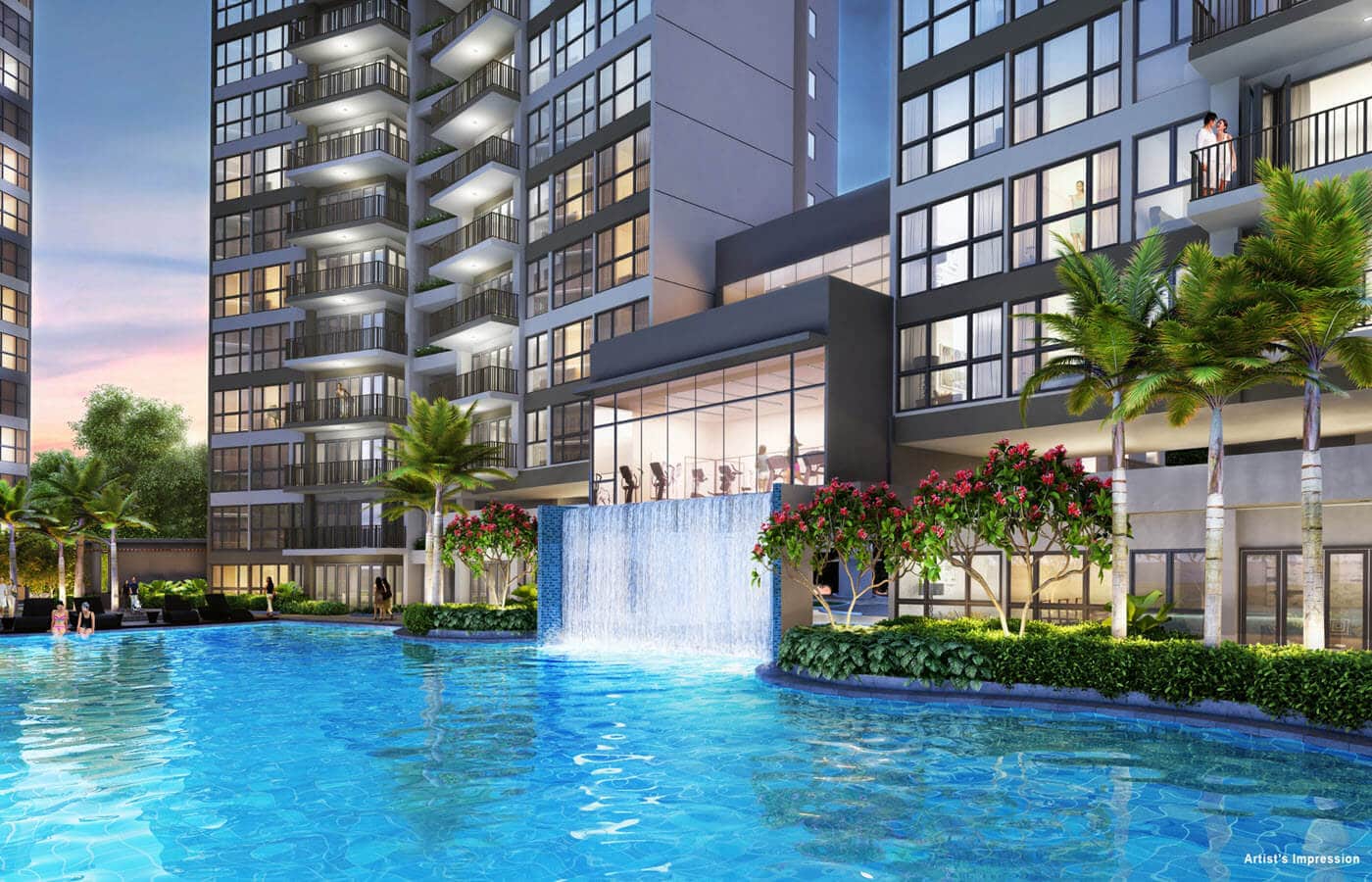
Discover the world of Temporary Occupation Permits (TOP) and their importance in building construction.
If you’re unfamiliar with this concept, a TOP is a legal document that allows the temporary occupation of a building while waiting for the Certificate of Statutory Completion (CSC) to be issued.
In this blog, we’ll explore the process of obtaining a TOP, the necessary documents, the role of Building Control Authorities, and the key requirements for applying for and obtaining a TOP.
Key Takeaways
| Key Takeaway | Information |
|---|---|
| Purpose of Temporary Occupation Permit (TOP) | TOP is a legal document issued by the Commissioner of Building Control in Singapore to permit temporary occupation of a building while waiting for the Certificate of Statutory Completion (CSC). It confirms compliance with building codes and regulations and is required for legal occupation of a property. |
| Application Process for TOP | The application process involves submitting relevant documents, including an application form, qualified person’s certification, and a structural safety certificate, to the Building Control Authorities. A site inspection is scheduled to ensure compliance, and if requirements are met, the TOP is issued. |
| Documents Required for TOP Application | Application form, qualified person’s certification, structural safety certificate, and other relevant documents as required by the Building Control Authorities. |
| Duration of TOP | The duration of TOP can range from three to thirty-six months, depending on the nature and complexity of the building project. |
| Eligibility for TOP Application | Property developers, owners, and contractors involved in building construction in Singapore are eligible to apply for a TOP upon completion of their projects. |
| Building Works and Regulations to Comply With | Building works and regulations in Singapore include specifications outlined by the Building and Construction Authority (BCA), The Lift (Lifts and Escalators) Regulations, and other relevant building codes and regulations. |
| Role of Building Control Authorities | The Building Control Authorities enforce building codes and regulations in Singapore. They grant and issue the TOP, conduct site inspections, and ensure compliance with standards. |
| Difference Between TOP and Certificate of Statutory Completion (CSC) | TOP allows temporary occupation while waiting for the CSC, which certifies compliance with building codes and regulations for permanent occupancy. Both TOP and CSC are required for building construction in Singapore. |
| Responsibilities After TOP Issuance | After TOP issuance, any damage or defect found is the responsibility of the developer or contractor, who must rectify them within a stipulated time frame before CSC issuance. Failure to do so may lead to legal action and temporary occupation permit revocation. |
| Regulatory Standards and Compliance for TOP | To obtain a TOP, compliance with regulatory standards is necessary. Clearances from various technical departments are required, and failure to comply may result in delays, legal consequences, or financial penalties. |
| Temporary Occupation Period Rights and Limitations | During the temporary occupation period, property owners have the right to occupy and carry out minor interior renovations. However, they must adhere to restrictions, such as not affecting the structural integrity of the building or contravening any conditions outlined in the TOP. |
| Role of TOP in Property Development Projects | TOP signifies the completion of a property development project in accordance with standards. It provides clarity and paves the way for further approvals, such as the CSC. Developers face challenges in obtaining TOP, including getting approval for deviations in building plans and meeting fundamental building requirements. |
| Common Challenges and Delays in Obtaining TOP | Common challenges include time-consuming application processes, clearances from multiple government agencies, and difficulties in accessing building service portals. Working with consultants and architects and ensuring compliance with regulations can help prevent delays. |
| Importance of Compliance and Certification | Compliance and certification are crucial for TOP to ensure the building meets standards and regulations. Non-compliance can lead to construction halts, fines, rectification orders, or legal action. Hiring professionals and obtaining necessary clearances help ensure compliance. |
Understanding the Temporary Occupation Permit (TOP) and Its Importance in Building Construction

What is a Temporary Occupation Permit?
Once issued, it confirms that the building is completed in compliance with the relevant building codes and regulations.
Why is a Temporary Occupation Permit important in building construction?
TOP is important because it confirms compliance with Singapore’s relevant building works and regulations.
Without a TOP, it is not legal for any person to occupy residential or commercial property.
What is the duration of a Temporary Occupation Permit?
The duration of a Temporary Occupation Permit in Singapore can range from three to thirty-six months, depending on the nature and complexity of the building project.
The Process of Obtaining a Temporary Occupation Permit: Step-by-Step Guide
What are the key steps in obtaining a Temporary Occupation Permit?
The application process for obtaining a Temporary Occupation Permit involves several steps.
First, the developer or contractor must submit all the relevant documents to the Building Control Authorities (BCA).
The submission must include an application form, the qualified person’s certification, and a structural safety certificate.
Afterward, the Building Control Authorities will schedule a site inspection to certify that all building works comply with the necessary standards.
Finally, if all requirements are met, the Building Control Authorities will issue the Temporary Occupation Permit to the developer or contractor.
What documents are required for the application of a Temporary Occupation Permit?
The following documents are required for the application of a Temporary Occupation Permit:
- The application form
- The qualified person’s certification is issued in accordance with the Building Control Act
- A structural safety certificate issued by a professional engineer
- Other relevant documents, as required by the Building Control Authorities
How long does it take to obtain a Temporary Occupation Permit?
The entire process of obtaining a Temporary Occupation Permit can take up to two to three months to complete, subject to all requirements being met and all relevant documents being correctly submitted.
Key Requirements for Applying and Obtaining a Temporary Occupation Permit

Who is eligible to apply for a Temporary Occupation Permit?
Property developers, owners, and contractors involved in building construction in Singapore are eligible to apply for a Temporary Occupation Permit upon the completion of their building projects.
What are the building works and regulations that need to be complied with?
Before applying for a Temporary Occupation Permit, the building works and regulations that need to be complied with in Singapore include the specifications outlined by the Building and Construction Authority (BCA) in the checklist provided, The Lift (Lifts and Escalators) Regulations, and other relevant Singapore’s building codes and regulations.
What are the important conditions that need to be met before applying for a Temporary Occupation Permit?
The important conditions that need to be met before applying for a Temporary Occupation Permit in Singapore include compliance with The Lift (Lifts and Escalators) Regulations, the approved plans, the relevant building codes and regulations, and the successful completion of the building project without any major defects or deviations.
The Role of Building Control Authorities in Granting Temporary Occupation Permits
Who are the Building Control Authorities?
The Building Control Authorities are technical authorities responsible for enforcing Singapore’s building codes and regulations.
Its mandate is to ensure that the buildings erected in Singapore conform to the set standards of building quality, public health, safety, and environmental sustainability
What is their role in granting a Temporary Occupation Permit?
The Building Control Authorities are responsible for granting and issuing the Temporary Occupation Permit after all requirements are met, and documents received in accordance with the relevant regulators set building codes and support Singapore’s building construction.
They also play a critical role in the inspection process necessary to certify that the building works comply with the necessary standards.
How does the Building Control Authorities’ inspection process work?
The Building Control Authorities’ site inspection process ensures that the building project complies with Singapore’s building codes and regulations.
The inspection process involves a series of checks to ensure that standards are met, including a check on the structural stability of the building, fire safety checks, sanitation checks, and checks on the lifts’ installation, if any.
The Difference Between Temporary Occupation Permits and Certificates of Statutory Completion

What is the difference between a Temporary Occupation Permit and a Certificate of Statutory Completion?
The Temporary Occupation Permit is a legal document that allows the temporary occupation of a building while waiting for the Certificate of Statutory Completion (CSC) to be processed.
The CSC, conversely, certifies that all building works meet the necessary building codes and regulations and serve as proof of legal compliance essential when selling, leasing, or operating the premises.
Do I need both for my building project?
Yes, you need both for building construction in Singapore.
The Temporary Occupation Permit serves as temporary approval while you wait for the Certificate of Statutory Completion, which provides the permanent legal documents accrediting the compliance of the building.
What happens if there is any damage or defect found after the issuance of a Temporary Occupation Permit?
After issuing the Temporary Occupation Permit, any damage or defect found in the building is the responsibility of the developer or contractor.
They must rectify deficiencies within the stipulated time frame before issuing the Certificate of Statutory Completion (CSC).
Failure to do so may lead to legal action by the Building Control Authorities, who may revoke the Temporary Occupation Permit until all deficiencies are rectified.
What is a Temporary Occupation Permit and why is it needed?
Understanding the Purpose and importance of a Temporary Occupation Permit
A Temporary Occupation Permit (TOP) is a document issued by Singapore’s Building and Construction Authority (BCA).
This permit certifies that a building or unit has passed relevant inspections and is deemed suitable for occupation.
TOP is mandatory before property owners can legally occupy or rent out their units.
The significance of compliance certificates from key technical departments in obtaining a TOP
Property owners must obtain compliance certificates from various technical departments to apply for a TOP.
These departments include the National Environment Agency (NEA), PUB, the Singapore Civil Defence Force (SCDF), and more.
The compliance certificates signify that the building or unit meets specific requirements set by respective departments.
The stamp of approval from relevant authorities: How it affects the property owner
Once the relevant authorities issue compliance certificates, they will conduct a final property inspection.
They will issue the TOP to the property owner if there are no outstanding issues.
The TOP date indicates when the property is suitable for occupation.
The TOP is valid for up to five years from the TOP date.
Property owners should plan the renovation or rental of their properties accordingly to this duration.
How to apply for a Temporary Occupation Permit?

Understanding the application procedure for a Temporary Occupation Permit
The application for a TOP can only be made by a Qualified Person (QP), who is a registered professional with the BCA.
Real estate developers usually engage QPs to apply for TOP, as it requires a high level of technical knowledge and expertise.
Property owners who want to apply for TOP on their own may face difficulties in navigating the complex procedures.
The site inspection process for Temporary Occupation Permits
Before applying for TOP, QPs must conduct a site inspection of the building or unit.
This is to ensure that the development is in accordance with the approved building plans and complies with relevant regulations.
QPs are responsible for checking that the workmanship, materials, and design quality is up to standard.
The role of Building Control of the BCA in the application process
The Building Control of the BCA plays a crucial role in the application process.
They are responsible for ensuring that the QP has fulfilled their duties and all compliance certificates are in order.
They may also request for additional information or conduct further investigations if necessary.
What you need to know about Temporary Occupation Permits for Residential Units?
Temporary Occupation Permits for newly-completed Developments: What property buyers should know
For newly-completed developments, property buyers should take note of the TOP date when considering the purchase.
The TOP date signifies when the unit is suitable for occupation, and any renovation or rental plans should be planned accordingly.
The subtle differences between Temporary Occupation Permits for condos and HDB flats
There are subtle differences between TOP for condominiums and HDB flats.
Private developers usually develop condominiums, while the government evolves HDB flats.
The TOP application process for each may vary slightly, but both require compliance certificates from relevant technical departments.
Fast-track system for Temporary Occupation Permits: How does it work?
A fast-track system for TOP allows property owners to obtain the permit within one working day.
However, this is subject to certain conditions and the property must be deemed suitable for occupation without delay.
Temporary Occupation Permits for Commercial and Industrial Buildings

The mix of requirements for industrial building development: What property developers need to know
For real estate developers developing industrial buildings, there is a mix of requirements they need to meet before they can apply for TOP.
This includes obtaining various compliance certificates and ensuring that the building is up to standard for its intended use.
The role of compliance certificates in the quality standard for commercial and industrial buildings
Compliance certificates ensure that commercial and industrial buildings meet the required quality standards.
These certificates signify that the building has met specific requirements set by technical departments and is safe for occupation.
It is mandatory for property owners to obtain these certificates before applying for TOP.
The government-authorized approval process for commercial and industrial buildings
Commercial and industrial buildings undergo a government-authorized approval process before a TOP can be issued.
This process is to ensure that the building is fit for its intended use and that safety measures are in place to protect occupants.
The QP plays a crucial role in this process, ensuring that all compliance certificates are in order and the building has met all requirements.
Clearances and Compliance: Ensuring Regulatory Standards for Temporary Occupation Permits
What are the regulatory standards for temporary occupation permits?
Temporary Occupation Permit or TOP is a metaphorical stamp that signifies your building is safe and complies with the regulations of the Building Control Act1989.
Therefore, there are a multitude of regulations that you need to comply with.
These include fundamental building requirements that must be met to obtain a TOP.
Building inspection, building regulations, and building standards are all aspects that the regulatory authorities scrutinize before approving TOP.
What are the necessary clearances needed to obtain a temporary occupation permit?
To obtain a temporary occupation permit in Singapore, there are several clearances that you must have.
One of them is clearance from the “Building Control” division.
Another is clearance from the Pollution Control Department.
You must also submit written directions based on Building Agreement, half-completed buildings, and deviations in building plans.
Before applying for a temporary occupation permit, it is best to check all clearances and regulations that need to be met.
What happens if a property owner fails to comply with these standards?
If a property owner fails to comply with the necessary regulations, building developers may face a delay in their building construction progress reports.
Moreover, you might not receive your temporary occupation permit if your building is already finished.
Failure to comply may also result in legal and financial consequences.
The Temporary Occupation Period: Rights and Limitations for Property Owners
What is the temporary occupation period and what does it entail?
After you receive your temporary occupation permit, your building is officially recognized as safe and legally inhabitable.
The temporary occupation period or TOP lasts for three years from the date of issuance.
This period provides a window for you to confirm that everything is in accordance with the provisions set out in the temporary occupation permit.
What rights do property owners have during this period?
During the temporary occupation period, you have the right to occupy your property and carry out minor interior renovations.
The temporary occupation permit allows you to use your new building as if it were a completed building.
You can also carry out a piece of property jargon called an as-built inspection to prepare for your Certificate of Statutory Completion.
What are the limitations of temporary occupation permits for property owners?
Even though it grants temporary habitation of a property, the TOP is optional.
Additionally, there are several restrictions that must be kept in mind when it comes to temporary occupation permits.
You cannot carry out any building work that might contravene any conditions outlined in your TOP, or on any other parts of your property.
You also cannot confine or carry out any alteration or addition within your property that will affect the structural integrity of the building or endanger anyone else.
Temporary Occupation Permits and Their Role in Property Development Projects

What is the role of temporary occupation permits in property development projects?
Temporary Occupation Permits are a vital part of property development projects.
The successful completion of a TOP signifies the completion of a project with respect to pre-agreed standards.
It clarifies the project’s completion and paves the way for further approvals, such as the Certificate of Statutory Completion (CSC).
How does the process for obtaining a temporary occupation permit differ for development projects?
Overall, obtaining a temporary occupation permit is similar for both development projects and existing properties.
However, there are some differences.
For instance, developers must submit the entire property screening to the regulatory authority.
This is in addition to the clearances that are required for individual properties.
What are some common challenges developers face in obtaining temporary occupation permits?
One of the most common challenges developers face when trying to obtain a temporary occupation permit is getting approval for deviations in building plans.
Getting customized and innovative building plans approved by the regulatory authorities can be quite challenging.
Another challenge pertains to meeting fundamental building requirements outlined by the authorities for developers.
Common Challenges and Delays in Obtaining Temporary Occupation Permits
What are some of the most common challenges property owners face in obtaining a temporary occupation permit?
Obtaining a temporary occupation permit can be time-consuming and might require several clearances from several government agencies.
Delays could occur if the appropriate legislation and regulations are not followed.
Another challenge for homeowners could be arranging access to the building service portal, especially for HDB flats or condos.
What can be done to prevent delays in the application process?
The best way to prevent delays in the application process is to liaise with consultants and architects to develop the building layout plans.
This will ensure compliance with all necessary regulations and requirements and minimize the likelihood of any delays occurring.
Are there any special considerations for HDB flats or condos?
Yes, there are.
For HDB flats, you must obtain clearance from the Housing and Development Board via SingPass.
In the case of condominiums, you will need to ensure that the development has a swimming pool or playground and obtain clearance from the Building Control division.
The Importance of Compliance and Certification in Temporary Occupation Permits

Why are compliance and certification important for temporary occupation permits?
Compliance and certification are essential to ensure that the building is up to scratch and is fit to live in.
They also aid in confirming that the regulations are in accordance with construction standards and pre-agreed specifications.
What are some of the consequences of non-compliance?
Non-compliance can lead to construction work being halted, as well as the offender receiving a violation fine or summons, a rectification order issued, or prosecution in court.
How can property owners ensure they are in compliance with all regulations?
Property owners can ensure they are in compliance with all regulations by hiring professionals or consultants who are knowledgeable in local regulations and have expertise in overseeing the construction of properties.
Before applying for a TOP, you should have all necessary clearances and documentation in order, to ensure compliance with all regulations and satisfying any other conditions required by the regulatory authorities.
Conclusion
A Temporary Occupation Permit (TOP) is a crucial document that confirms a building’s compliance with regulations and allows for legal occupation.
It is obtained through a thorough application process, including inspections and the submission of relevant documents.
Compliance with building codes and regulations and obtaining clearances from various authorities is essential.
TOP is vital in property development projects, providing clarity and allowing further approvals.
It is important for property owners to ensure compliance to avoid delays and legal consequences.
It is important to note that a Temporary Occupation Permit differs from a Certificate of Statutory Completion (CSC).
While the TOP allows temporary occupancy, the CSC confirms full compliance with building codes and regulations and is required for selling, leasing, or operating the premises.
To encourage readers to explore more on this topic, we recommend checking out our other blog articles related to building construction and property development.
These articles provide additional insights and information that can help readers comprehensively understand the subject.
Frequently Asked Questions
What is a temporary occupation permit?
A temporary occupation permit (TOP) is a document issued by the authorities that permit occupants to occupy a property that is still under construction or has just been completed.
What is the process for applying for a temporary occupation permit?
The process for a temporary occupation permit involves applying for a license from the Building and Construction Authority (BCA).
The submission must include all required documents and must be made in accordance with the regulations and guidelines set out by the BCA.
What is CSC in relation to a temporary occupation permit?
CSC is short for a Certificate of Statutory Completion, which is a certificate that is issued by the BCA upon the completion of a building project.
The CSC confirms that the building has been constructed in accordance with the relevant regulations and guidelines.
What is a site inspection?
A site inspection is a process carried out by the authorities to inspect a property to ensure that it has been constructed in accordance with the regulations and guidelines.
What is a top date?
A top date is the date that is specified on a temporary occupation permit.
It is the date from which the occupant can legally occupy the property.
What are some of the regulations that must be followed in order to obtain a temporary occupation permit?
Obtaining a TOP involves adhering to a multitude of regulations, including the Building Control Act1989, Building Control for the TOP, and the Building Agreement.
In addition, building construction progress reports must be submitted, and building regulations and standards must be adhered to.
What happens if there are deviations in the building plans?
If there are deviations in the building plans, a building inspection may be required to ensure that the building meets the fundamental building requirements set out by the authorities.
Can a property be occupied if it is still under construction?
Yes, a property that is still under construction can be occupied if a temporary occupation permit has been issued.
What is the penalty for occupying a property without a temporary occupation permit?
Occupying a property without a temporary occupation permit is an offense that carries a penalty.
The occupant may be fined, and the building may be subject to further inspection and scrutiny.
How long does it take to obtain a temporary occupation permit?
The time it takes to obtain a temporary occupation permit can vary, but it is typically within 14 days of submission of a complete application.
What is the role of the developer in obtaining a temporary occupation permit?
The building developer is responsible for ensuring that the construction is carried out in respect of the regulations and guidelines set out by the authorities.
The developer also submits the application for the temporary occupation permit on behalf of the occupant.




















